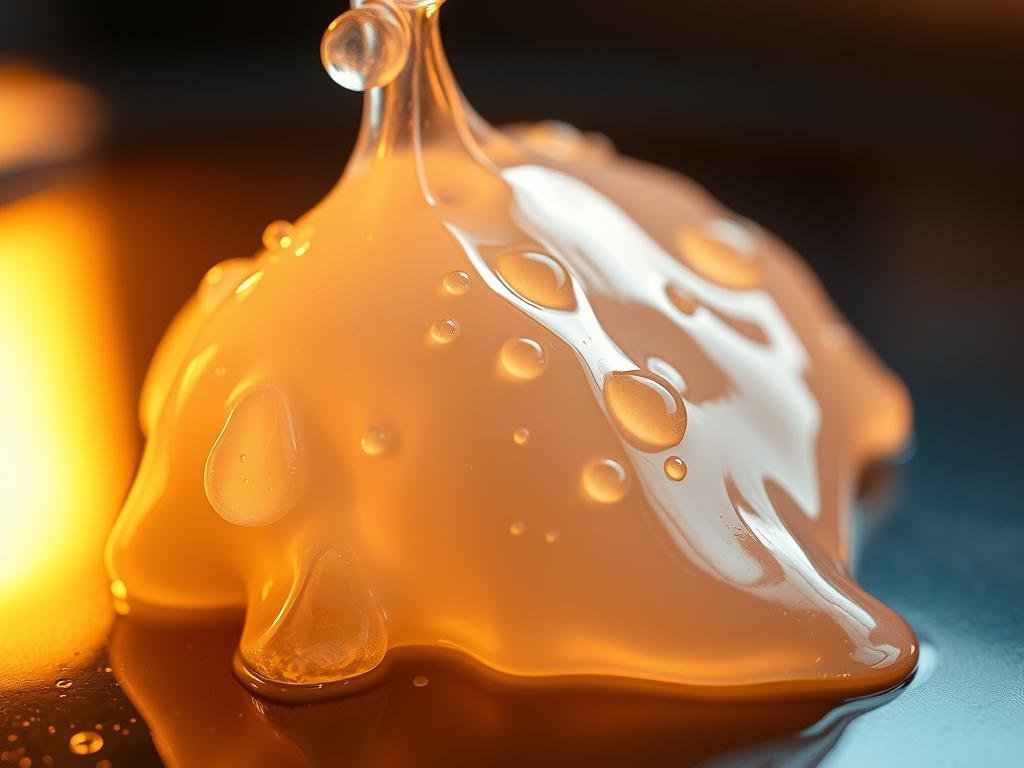理解的 熱性質 of plastics is crucial in manufacturing and product development. The temperature at which a plastic melts, known as its melting point, is a critical factor in determining its suitability for various applications.
Different types of plastics respond uniquely to heat, transitioning from solid to liquid states at specific 溫度. 這份全面指南探討塑膠熔化背後的科學 points and their significance in material selection and quality control.
By examining the melting behavior of various plastics, engineers and manufacturers can make informed decisions about their use in different products, ensuring the final product meets the required standards.
Understanding the Basics of Plastic Melting
了解塑膠如何對熱作出反應對其有效使用至關重要。當塑膠加熱時,它會失去剛性並變軟,但這個過程會根據塑膠的種類及其熔點而有所不同。
What Happens When Plastic Heats Up
As plastic heats up, the molecular chains begin to move more freely, leading to a change in its physical properties. Some plastics become pliable and can be molded, while others melt completely. The 溫度 發生的時間點對製造流程至關重要。
| Plastic Type | 融化行為 | Typical Melting Temperature |
|---|---|---|
| Polyethylene (PE) | Melts Completely | 105-130°C |
| Polypropylene (PP) | Becomes Pliable | 160-180°C |
相變:由固體轉變為液體
從固體到液體的相變是塑膠熔化的關鍵方面。這個轉變受到塑膠的化學結構及其 屬性. Understanding this process is essential for optimizing manufacturing processes.
The Melting Point of Plastic: A Comprehensive Overview
塑膠材料展現出獨特的熱性質,包括熔點,這對於製造過程至關重要。了解這些性質對於選擇適合特定應用的塑膠非常重要。
定義高分子材料的熔點
The 熔點 is the temperature at which a plastic transitions from a solid to a liquid state. This transition is a critical characteristic that influences the processing and application of plastics. In polymers, the melting point is not always a sharp, well-defined temperature but can be a range due to the material’s complexity.

Melting Point vs. Heat Deflection Temperature
區融點與溶點之間的區別是至關重要的 熱變形溫度 (HDT). While the melting point indicates the temperature at which a plastic melts, HDT measures the temperature at which it begins to deform under a specific load. HDT is generally lower than the melting point and is critical for applications where the material must retain its shape under heat and stress.
影響塑膠熔點的因素
多個因素影響塑膠的熔點,包括 molecular weight, crystallinity, and the presence of additives. These factors can significantly affect the thermal properties of plastics, making it crucial to understand their impact on melting behavior. Environmental conditions, such as pressure and humidity, also play a role in determining the effective melting temperature in real-world applications.
Crystalline vs. Amorphous Plastics: Different Thermal Behaviors
The thermal behavior of plastics is significantly influenced by their molecular structure, particularly whether they are crystalline or amorphous. This difference in structure affects their melting points and overall performance in various applications.
結晶性塑膠:尖銳的熔點
結晶塑膠具有明確的熔點,能夠從固態迅速轉變為液態。這個特性使它們能在達到特定溫度之前保持剛性。例如,聚酰胺(尼龍)是一種常用的結晶塑膠,以其明顯的熔點而聞名。
| Crystalline Plastic | 熔點 (°C) |
|---|---|
| 聚乙烯 | 105-135 |
| 聚丙烯 | 160-180 |
| Nylon | 215-265 |
非晶塑膠:逐漸軟化
Amorphous plastics, on the other hand, soften gradually as temperatures increase. Instead of a sharp melting point, they have a vicat softening temperature. Examples include polystyrene (PS) and polycarbonate (PC), which are ideal for applications requiring flexibility and impact resistance.
Common Plastic Types and Their Melting Points
The diverse melting points of plastics play a significant role in their selection for various purposes. Plastics are categorized into different types based on their applications and thermal properties.
Everyday Plastics: PE, PP, PS, and PVC
Everyday plastics, such as polyethylene (PE), polypropylene (PP), polystyrene (PS), and polyvinyl chloride (PVC), are used in a wide range of applications. PE is available in two major forms: low-density polyethylene (LDPE) and high-density polyethylene (HDPE), with melting points of 105°C and 125°C, respectively.
PP has a melting point of 165°C, making it suitable for coffee mugs and plastic tableware. PS melts at around 90°C and is often used in packaging materials.
Engineering Plastics: Nylon, PC, and ABS
Engineering plastics, including nylon (polyamide), polycarbonate (PC), and ABS, have higher melting points, typically between 200-280°C. Nylon, for instance, has a melting point around 200°C, making it suitable for demanding applications.
PC 和 ABS 也用於需要高熱穩定性的應用中。
高性能塑膠:PEEK 和 PPS
像PEEK(聚醚醚酮)和PPS(聚苯硫醚)等高性能塑膠具有更高的熔點,PEEK的熔點範圍為350-390°C,PPS的熔點範圍為200-220°C。
這些塑膠用於航空航天、汽車和醫療應用中,對高熱阻性能要求嚴格。

As “塑膠的選擇取決於其熔點及其他特性”, 了解這些特性對於選擇適合特定應用的材料至關重要。
為什麼熔點在製造過程中很重要
Melting points are a critical factor in plastic manufacturing, affecting both process and product quality. In injection molding, one of the most common manufacturing processes, understanding and controlling melting points is essential for producing high-quality products.
Injection Molding Temperature Considerations
溫度控制在注塑成型中至關重要。 melt temperature,這是塑料離開噴嘴並進入模具時的實際溫度,必須謹慎管理。這個溫度與料筒設定值不同,料筒設定值是機器上設定的溫度,以達到所需的熔融溫度。
- 施加在材料上的機械作用會影響其實際的熔點。
- 螺絲和螺桿的居留時間和狀況也會影響熔點。
平衡熔融溫度與模具溫度
平衡熔體溫度與模具溫度對於實現最佳生產效率與產品品質至關重要。模具溫度影響冷卻速度、結晶以及成品的內部應力。如果溫度未能適當平衡,可能導致變形、縮痕和短射等缺陷。
- 適當的溫度控制直接影響產品品質與尺寸穩定性。
- 製造商必須根據不同塑膠類型的熔點和熱性質調整溫度參數。
選擇適合高溫應用的塑膠
當涉及高溫應用時,選擇合適的塑膠材料對確保零件的耐用性和性能至關重要。像聚醚醚酮(PEEK)或聚苯硫醚(PPS)等高溫塑膠,經過設計以在高溫下保持機械性能並抵抗變形。
行業特定需求
不同產業具有不同的溫度閾值和性能需求,這些因素會影響材料的選擇。例如,航空航天和汽車產業需要能夠承受極端溫度和嚴苛化學品的塑膠。醫療產業也要求高性能塑膠,能夠耐受滅菌過程並保持其完整性。
超越熔點:其他關鍵性質
雖然熔點是一個關鍵因素,但其他特性如耐熱變形溫度、熱導率和長期熱老化也必須考慮。下表突顯了一些高溫塑膠的主要特性。
| 塑膠材料 | 熔點 (°C) | 熱變形溫度 (°C) | Chemical Resistance |
|---|---|---|---|
| PEEK | 343 | 160 | 高 |
| PPS | 285 | 135 | 高 |
| Nylon | 220 | 80 | 中等 |
考慮到這些因素和特性,工程師和設計師可以做出明智的決策,平衡性能需求與成本考量,最終選擇最適合其高溫應用的塑膠材料。
結論
As we’ve explored, plastic melting points play a vital role in determining the suitability of 塑膠 for various 應用程式. 理解的 熔點 對於製造過程,例如 注塑成型, 以及最終用途 應用程式. Proper 溫度 生產過程中的控制直接 影響 產品品質與性能。結晶與非晶之間的區別 塑膠 並且它們的熱行為對加工參數具有重要影響。通過參考一個全面的 融點圖表, 工程師和製造商在選擇時可以做出明智的決策 塑膠 適用於高溫環境的材料。
平衡因素如 熔點, 機械性質與成本考量導致最佳 塑膠 材料選擇。這些知識對於生產高品質產品至關重要 產品 和 components. 透過理解 塑膠熔點 以及它們的重要性,專業人士可以確保他們項目的成功。
